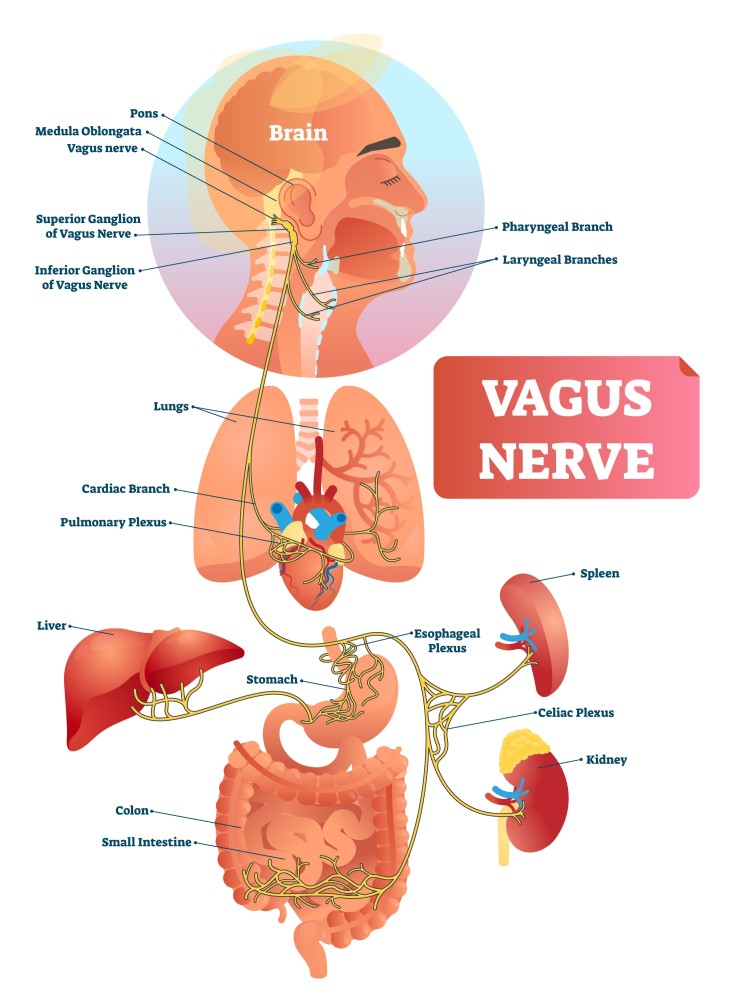We live in a world that constantly bombards our senses, keeping our bodies trapped in a low-grade state of alert, often called chronic stress or the fight-or-flight response. This state—scientifically known as sympathetic nervous system dominance—is a survival mechanism that was once useful for escaping predators but is now triggered by deadlines, traffic, and endless notifications. The result? Anxiety, poor sleep, constant tension, and feeling perpetually overwhelmed.
We live in a world that constantly bombards our senses, keeping our bodies trapped in a low-grade state of alert, often called chronic stress or the fight-or-flight response. This state—scientifically known as sympathetic nervous system dominance—is a survival mechanism that was once useful for escaping predators but is now triggered by deadlines, traffic, and endless notifications. The result? Anxiety, poor sleep, constant tension, and feeling perpetually overwhelmed.
The good news is that you possess a powerful, built-in mechanism to flip the switch from panic to peace: your vagus nerve and your parasympathetic nervous system (the "rest-and-digest" mode). This comprehensive guide provides a simple, evidence-based, 7-minute routine to manually engage this calming system, offering a rapid, effective nervous system regulation strategy you can use anytime, anywhere. This is your personal stress reduction hack, designed to bring your body back into its window of tolerance.
Understanding the Stress Trap: Why We Need a Reset
The core problem in modern stress is completion. When you are stressed, your body floods with cortisol and adrenaline, preparing you to run or fight. But since you can’t physically run from an overwhelming email, that energy gets trapped as physical tension. This leads to somatic symptoms of anxiety—tight shoulders, a racing heart, and shallow breathing.
A true nervous system reset isn't just about distracting your mind with meditation; it's about using the body to signal safety to the brain, releasing the stored trauma and tension. By combining targeted breathwork, vagus nerve stimulation, and somatic techniques, this 7-minute routine addresses the stress at its root.
The 7-Minute Nervous System Reset Routine (Step-by-Step)
This routine is intentionally sequenced to move from an active, tension-releasing phase to a deep, restorative phase.
| Time Allotment | Action | Focus/Key Technique |
|---|---|---|
| 0:00 – 1:30 | The Deep Release Sigh (Cyclic Sighing) | Rapidly lower the heart rate and clear lung residue. |
| 1:30 – 3:00 | The Vagal Humming Activation (Bhramari) | Directly stimulate the vagus nerve to promote relaxation. |
| 3:00 – 4:30 | The Butterfly Hug (Bilateral Stimulation) | Engage both brain hemispheres to install a feeling of safety. |
| 4:30 – 6:00 | Spinal/Movement Shake (Somatic Release) | Release trapped physical tension and stress hormones. |
| 6:00 – 7:00 | Grounding and Integration | Anchor the new state of calm to the present moment. |
Step 1: The Deep Release Sigh (1.5 Minutes)
This powerful breathwork technique, popularized by neuroscientist Dr. Andrew Huberman, is one of the fastest ways to activate your parasympathetic nervous system.
How to Practice: Sit comfortably with your spine straight. Inhale deeply through your nose, then—at the top of the inhale—take a second, short sip of air. The lungs should feel completely full. Then, exhale slowly and completely through your mouth with a long exhale, making a gentle "whoosh" sound.
Why it Works: This pattern clears the collapsed air sacs (alveoli) at the bottom of the lungs, maximizing oxygen exchange and providing an immediate signal of safety to the brain, which leads to a rapid reduction in heart rate. Repeat this cycle 6–8 times.
Step 2: The Vagal Humming Activation (1.5 Minutes)

The vagus nerve runs from the brainstem down to the abdomen, and its tone (health) directly correlates with our capacity for emotional regulation. Vibrating the vocal cords is a direct, non-invasive way to stimulate it.
How to Practice: Inhale deeply through your nose. As you exhale, close your mouth and create a long, steady "HMMMM" sound (like a contented bee). Focus on feeling the vibration in your chest, throat, and nasal passages. The exhale should be twice as long as your inhale.
Why it Works: The vibration stimulates the nerve endings of the vagus nerve in the throat, which in turn activates the calming rest-and-digest response. This simple technique is a cornerstone of emotional regulation. Continue for 4–5 long hum cycles.
Step 3: The Butterfly Hug (1.5 Minutes)
This somatic grounding technique, often used in trauma therapy (EMDR), utilizes bilateral stimulation—the rhythmic, alternating engagement of the left and right sides of the body—to balance the brain and instill a sense of safety.
How to Practice: Cross your arms over your chest, placing your hands on your collarbones or upper arms (like giving yourself a comforting hug). Begin gently and rhythmically tapping your hands back and forth, alternating sides (left-right, left-right). Maintain a slow, steady pace.
Why it Works: The rhythmic tapping helps integrate the emotional and logical centers of the brain, much like the process that occurs during REM sleep. It's a powerful self-soothing technique that anchors your attention firmly in the present, interrupting the spiral of racing thoughts and anxiety.
Step 4: Spinal/Movement Shake (1.5 Minutes)
This is the most direct way to physically dump accumulated tension—a key step in somatic healing. Animals instinctively shake off stress after a threat; humans rarely do.
How to Practice: Stand up and bend your knees slightly. Start gently shaking your body, focusing on allowing the movement to originate from your hips and spine. Let your arms, shoulders, and head move loosely. Don't worry about how you look; the goal is to feel a gentle tremor.
Why it Works (Intense Keyword: Trauma Release Exercises): Intentional shaking helps the muscles release the physiological energy (adrenaline/cortisol) they held onto during the stress response. This process aids in nervous system regulation and can provide profound and immediate relief from chronic tension.
Step 5: Grounding and Integration (1 Minute)
The final minute is for integrating the physical shift you’ve just created.
How to Practice: Plant your feet firmly on the ground. Close your eyes, or softly gaze downwards. Notice the sensation of your feet connecting to the floor (a grounding technique). Take three slow, deep, natural breaths. Repeat the affirmation: "I am safe. I am here now."
Why it Works (Intense Keyword: Mindfulness): This intentional pause locks in the parasympathetic state, ensuring the brain registers the new feeling of calm as your baseline, making the reset more effective over time.
The Long-Term Benefits of Nervous System Regulation
Incorporating this 7-minute routine into your daily life—whether you use it as an anxiety relief tool before a presentation or as an evening stress relief practice—offers compounded benefits:
- Increased Heart Rate Variability (HRV): The techniques, particularly the breathwork and humming, improve your HRV, a key metric of your body's resilience and ability to respond flexibly to stress.
- Reduced Cortisol Levels: By signaling safety to your brain, you naturally reduce the production of the primary stress hormone, cortisol, which is critical for long-term health and preventing burnout.
- Enhanced Focus and Cognitive Function: When your nervous system is regulated, your prefrontal cortex (the thinking brain) comes back online, moving you out of the reactive, emotional brain. This is essential for improved concentration.
This 7-Minute Nervous System Reset is not a cure, but a powerful, accessible skill for emotional intelligence and physical wellness. Consistent practice teaches your autonomic nervous system that you are the pilot, not just a passenger, allowing you to move from feeling constantly overwhelmed to finding sustainable, authentic peace. Embrace this simple daily wellness routine and discover the transformative power of a regulated, resilient self.




































